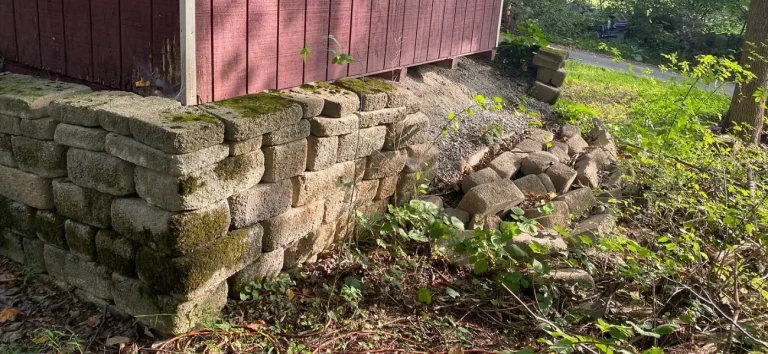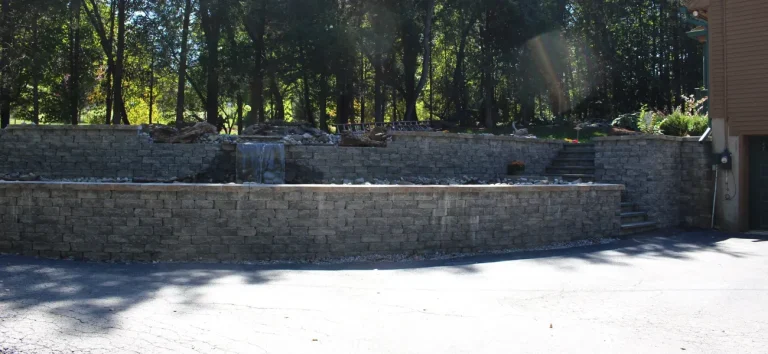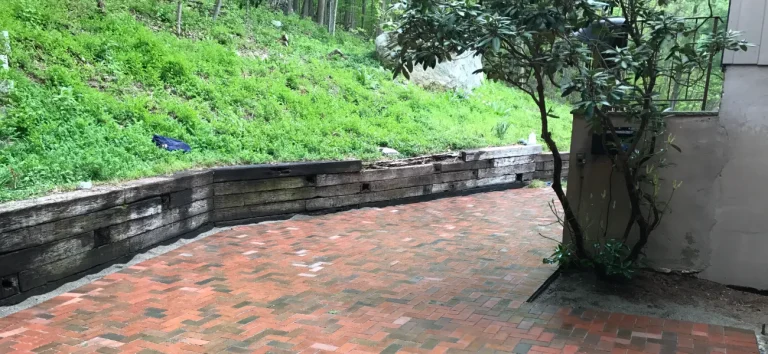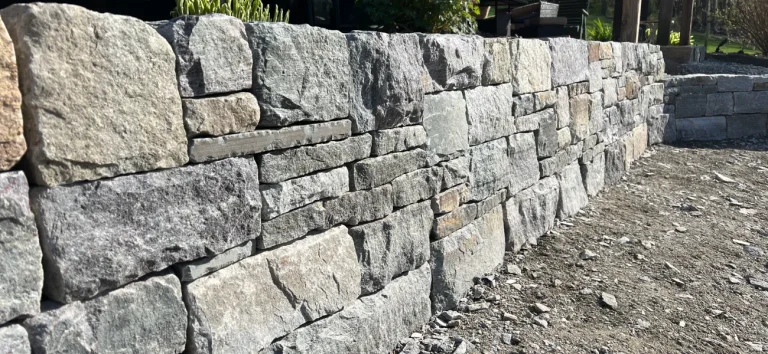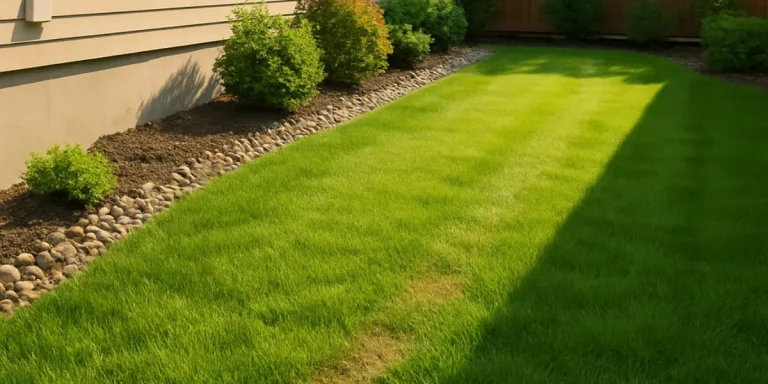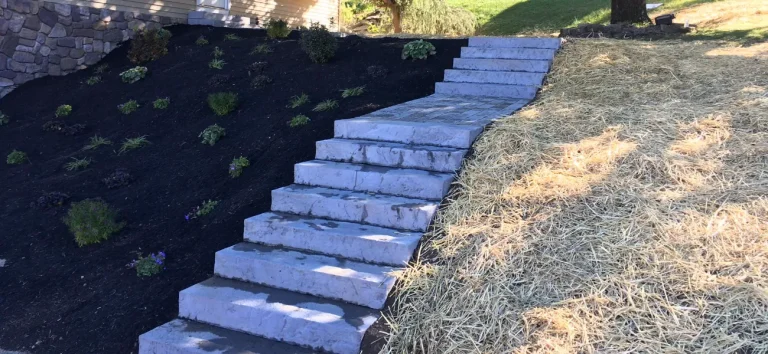How to Stop Water Pooling in Your Garden Beds
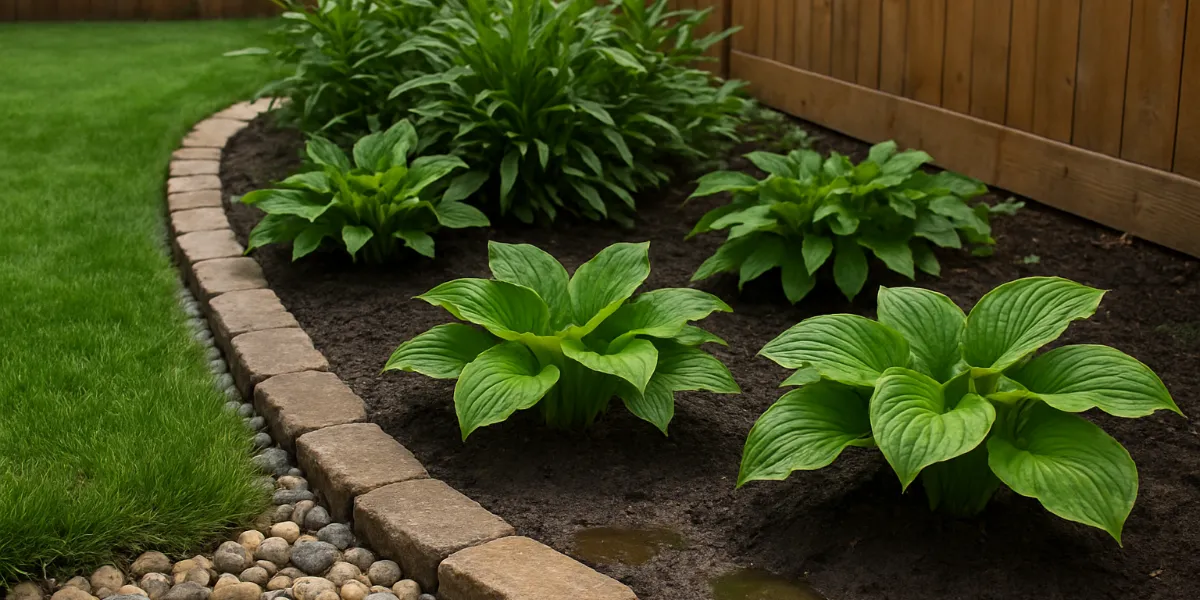
Water pooling in your garden beds isn’t just a minor inconvenience—it can lead to root rot, plant stress, mold growth, and ruined soil structure. If your garden beds aren’t draining properly after rainfall or irrigation, it's a sign of a bigger drainage problem that needs to be addressed.
At JBS Landscaping, we help homeowners in Columbia, New Jersey and surrounding areas solve drainage issues through professional grading, soil improvement, and custom landscaping solutions. Here's how to fix standing water problems in your planting beds and protect your investment.
What causes water to pool in garden beds?
When water lingers in your garden beds long after it rains—or worse, never fully drains—it’s a sign that something is interfering with natural water movement. While many homeowners first assume it's an issue with too much rain or watering, the real cause is often hidden beneath the surface or tied to how the landscape is structured.
Here are the most common contributors to poor drainage in garden beds:
Improper grading
The shape and slope of the surrounding land have a major impact on how water flows across your property. If the terrain slopes toward your garden beds rather than away from them, rainwater and runoff will naturally collect in those low areas. This is especially common when beds are installed at the base of hills or near home foundations without proper grading.
Compacted or clay-heavy soil
In many parts of New Jersey, the soil has a high clay content. While this type of soil can be nutrient-rich, it’s also dense and slow-draining. Over time, foot traffic, heavy equipment, or even regular rainfall can compact the soil further, creating a hard layer that prevents water from soaking in. Instead, the water sits on the surface—saturating roots and promoting fungal growth.
Poor bed construction
Raised beds are often used to improve drainage—but if they’re built without proper layers or with materials that trap water, they can make the problem worse. Beds that lack a gravel base or contain poorly draining soil blends can hold onto water instead of allowing it to drain through. Edging that creates a "bathtub" effect can also trap water inside the bed.
Blocked drainage paths
Even a well-constructed garden bed can develop drainage issues over time if the exit routes for water are blocked. Mulch buildup, fallen leaves, or creeping ground cover can unintentionally dam water in place. This issue often goes unnoticed until pooling becomes severe after a heavy rain or irrigation cycle.
Overwatering or poor irrigation design
Sometimes the problem isn’t the soil or slope—it’s how water is being delivered. Sprinklers, drip systems, or manual watering routines that deliver too much water, too frequently, can overwhelm the bed’s ability to absorb moisture. Inconsistent coverage, leaking valves, or misaligned sprinklers can saturate some areas while leaving others dry.
Pooling water is rarely caused by a single factor. In most cases, it’s the result of two or more issues working together—such as compacted soil paired with excessive runoff or poor grading compounded by blocked drains. That’s why the first and most important step is understanding the full scope of the problem.
At JBS Landscaping, we begin every drainage project with a thorough inspection of your soil, slope, and existing garden layout to identify what’s really causing the issue. From there, we create a custom solution that ensures your beds not only drain properly—but thrive.
Steps to stop water pooling in garden beds
1. Improve grading around the garden
The first and most effective solution to standing water is to correct the slope of the surrounding landscape. Many garden beds fail to drain because the surrounding soil is flat or pitched incorrectly, causing water to collect in low spots.
To improve grading:
-
-
- Grade the surrounding soil to slope gently away from the garden. A minimum slope of 2% (about 1/4 inch per foot) helps encourage proper runoff.
- Install swales or berms to reroute excess water. Swales are shallow channels that direct water to lower, more absorbent parts of your yard. Berms are raised mounds that block or redirect water.
- Consider regrading the entire yard if multiple areas are affected. Localized fixes won’t be enough if your property has widespread drainage issues.
-
At JBS Landscaping, we specialize in professional land grading and drainage correction. We assess your property’s topography and implement long-term solutions to direct water away from your planting beds, foundation, and other vulnerable areas.
2. Amend the soil for better drainage
Even with perfect grading, poor soil structure can prevent water from soaking into the ground. This is particularly common in New Jersey, where many properties have compacted clay soils that retain water and suffocate plant roots.
To improve your soil’s drainage capacity:
-
-
- Mix in compost, aged bark, or coarse sand to help break up clay particles and allow air and water to flow more freely.
- Use a broadfork or soil aerator to loosen compacted layers without disrupting soil biology. This is especially important for in-ground beds that receive heavy foot traffic.
- Avoid walking on wet soil, which compacts it further and reduces drainage even more.
-
Our team at JBS Landscaping provides expert soil preparation as part of our garden bed installations. We test and amend the soil to match the needs of your plants and your site conditions—whether you’re planting vegetables, perennials, or low-maintenance native species.
3. Add or repair drainage systems
In situations where grading and soil improvements aren’t enough—such as in low-lying areas or beds near buildings—it may be necessary to install dedicated drainage systems to carry excess water away.
Effective options include:
-
-
- Perforated drain pipes (French drains) buried beneath the garden bed to collect and redirect water
- Drainage swales placed near the bed to manage surface water and storm runoff
- Dry wells, which collect water and allow it to slowly percolate into the subsoil
- Downspout extensions that route roof runoff far from the garden area
-
These systems work especially well in tandem with proper grading. At JBS Landscaping, we routinely integrate custom drainage solutions into our landscape installations, ensuring your yard functions as well as it looks.
4. Raise the beds properly
For areas with stubborn drainage problems or heavy clay soils, properly built raised beds offer an effective alternative. However, poorly constructed raised beds can actually trap water instead of resolving the issue.
To build a functional raised garden bed:
-
-
- Elevate the bed by at least 12–18 inches to ensure water drains effectively downward
- Use a high-quality, well-draining soil blend suited for your climate and plant type
- Avoid using plastic liners or impermeable materials at the bottom, which can block drainage
- Include a layer of gravel or coarse stone beneath the soil to aid water movement
-
At JBS Landscaping, we design and install custom raised garden beds that not only solve drainage issues but also enhance curb appeal. Our beds are built with attention to proper slope, soil layering, and compatibility with surrounding hardscapes and mulch beds.
5. Keep beds clean and maintained
Water buildup isn’t always the result of poor construction—it can also stem from simple neglect. Over time, mulch can become compacted, leaves can clog flow paths, and overgrown plants can block runoff from exiting the bed.
Ongoing maintenance tips:
-
-
- Rake out old or compacted mulch and refresh it each season to help absorb and disperse water
- Remove fallen leaves, branches, and garden debris that may trap moisture or block drains
- Trim or thin out overgrown plants that prevent sunlight from drying wet soil or slow down drainage
-
JBS Landscaping offers dependable landscape maintenance services designed to keep your garden beds—and entire yard—healthy, attractive, and functioning properly all year long.
Mini case study: Drainage fix in Rockaway, NJ
A homeowner in Rockaway contacted us after struggling with constant water pooling in their backyard garden beds. Their soil was dense, the surrounding lawn sloped inward, and every storm brought standing water that killed their perennials.
Our team regraded the surrounding area to create a gentle slope away from the beds, amended the soil with compost and sand, and added a small French drain behind the garden. Within two weeks, the homeowner noticed healthier soil, zero standing water, and no plant loss—even after a heavy summer storm.
Proudly serving Columbia and the surrounding area
JBS Landscaping proudly serves homeowners across Morris, Sussex, and Warren Counties, including:
-
- Columbia
- Allamuchy
- Budd Lake
- Chester
- Flanders
- Hackettstown
- Long Valley
- Newton
- Rockaway
- Sparta
- Succasunna
We specialize in landscape grading, drainage solutions, garden bed design, sod installation, mulch delivery, and full-service property maintenance.
Get your garden beds draining properly—starting today
Schedule your drainage assessment with JBS Landscaping
If your garden beds are struggling with water pooling, don’t wait for it to damage your plants or create bigger issues. Contact JBS Landscaping today to schedule an on-site assessment. We’ll identify the root cause and provide custom grading, drainage, or landscaping solutions to fix the problem for good.
We proudly serve Columbia, NJ and surrounding areas with trusted, high-quality landscaping solutions tailored to your property.

